The post Sonia Friedrich on changing our ‘default choice archietecture’ appeared first on .
]]>Behavioural economics proves that when you change the default choice architecture, where people still have choice, but have to opt out rather than opt in, you do change the outcomes. People’s natural (default) option is always the status quo and to take the path of least effort. We are hardwired this way.
For example, France has now changed the default when it comes to organ donation. (Here is the link below as reported in the independent) Independent, organ donors We know from other European countries this increases organ donation rates from 4% to 98%.When did you last get that shift with your marketing effort?
The Australian govt spent $200M between 2008 and 2012 and increased donors by only 17 people. Now any CEO tI know who gets $50M per year to increase donation rates with a result like that would be fired. It’s literally money being thrown away. If you want true results behavioural economic insights are changing the game. We don’t need to create new programmes, new campaigns or come up with new ideas. There is no need to reinvent the wheel when proven solutions already exist. Choice still exists too.
In my opinion, the reporting on Australia commentary regarding organ donation fails to ask the core question: “Is it working?” In business too we are often asking the wrong question. The right questions from a behavioural economics perspective are:
- What is the behaviour change you want and what is the default?
- How much are you spending to disrupt (achieve) it?
- What is your measured result?
- Is it working?
It’s interesting to look at Australia’s position on the opt out issue, and to imagine how much more money it’s going to cost the country to keep the status quote: ABC on the opt out organ donation policy.
We do now understand how predictably irrational human beings are. Use behavioural economics and you do change the way you solve most business challenges involving humans.
Add behavioural economics in 2017 and you will change the game. It’s time don’t you think? Maybe you’ll get a shift from 4% to 98%. Isn’t that at least worth one experiment?
Sonia Friedrich uses behavioural economics to solve business problems involving humans. Her next three-day academy It’s a No Brainer – Behavioural Economics in Business runs from 9-11 Feb 2017. Contact Sonia for more information, or to create the edge and have Sonia as the keynote speaker at your next conference. 0412 359 424 or e-mail her at [email protected]
The post Sonia Friedrich on changing our ‘default choice archietecture’ appeared first on .
]]>The post The movie Moneyball is right on the money… appeared first on .
]]>I love this movie. This American biographical sports drama from 2011, which is based on a true story, is smart, relevant and it explains a concept not many people can pull off – for so many reasons. It takes bravery, intelligence, the understanding of theoretical insights, and a unique ability to build application of these insights, when everyone else is playing the game the same way and telling you that is how you have to keep playing it. It takes jumping off the edge and bucking the system, despite all the odds, because you know you can never win in an unfair environment when the competition has more money than you, and can always outspend you, and buy the resources they need to keep winning. So why do you keep playing the old way?
If you haven’t seen Moneyball the movie see it get it out or download it as soon as you can. Why? Because Moneyball shows exactly what most businesses are trying to do today and why they are not succeeding. If you ‘get’ this movie you will immediately understand the power of behavioural economics (B.E.) on your business – even if you don’t know what B.E. is yet.
Brad Pitt plays the Oakland A’s general manager, Billy Beane. In this real life story he changes the game by hiring an outside Yale-educated economist who looks at baseball differently. It’s about buying wins not players.
Most businesses today are asking the wrong questions.
What’s the problem? Are you even looking at the problem? While you are busy solving the wrong problem and investing resources, over and over again to do so, you might want to start tomorrow differently. Instead, tomorrow ask yourself two different questions:
Q1: What behaviour are we trying to change?
Don’t be stunned if this takes you hours to truly identify. Yes, I’ve been in management meetings where we have spent nearly two hours trying to understand and agree on the actual customer behaviours we are trying to change.
Q2: How do we disrupt it?
To disrupt behaviour requires something so powerful it interrupts the customers default behaviour. Because status quo is always the first choice option. Let’s face it, if you’re not #1 then the default is to NOT buy your product. If you’re too scared to admit the truth that customers are walking away from your brand and buying the competition, you’re spending money in the wrong direction.
The Oakland A’s won exactly as many wins as the New York Yankees. But the NYY’s spent $1.4M per win and OA’s spent $260K. Billy Beane forever changed the way baseball was played.
Yes, change threatens the game, livelihoods, the market, the competition and yes the scariest of all – people’s jobs (including your own). However without it you’re losing anyway. So why not give it a try?
Today, it’s about outsmarting not outspending your competition. When are you going to begin?
Sonia Friedrich is a Strategic Consultant and runs the 3-Day Academy:
It’s a NO BRAINER! – Behavioural Economics in Business.
Each Academy is limited to 15 people.
OR contact Sonia to organise a Private Academy dedicated to changing the game in your business.
Call today 0412359424 or e-mail [email protected]
The post The movie Moneyball is right on the money… appeared first on .
]]>The post Businesses have 30 days left to apply for the R&D tax incentive appeared first on .
]]>If I said I can help you increase your revenue by 45% would you want to know how?
It’s not quite revenue, however it is $$$. For many businesses that invest in their own R&D, the Australian Government offers a 45% rebate through the R&D Tax Incentive. Not bad! Don’t you think it would be silly to miss out? Not only that, if you do qualify, you are guaranteed for the next 5 years.
Yes it can feel like another chore. So let’s get that out of the way too. Just like you hire your accountant to do your tax, there are specialised accountants for R&D submission – experts in their field who understand the application process like the back of their hand. I know one in particular with a 97% success rate, (if you meet the qualifying criteria)…AND in nearly all cases he only takes a 10% success fee. If you want to know more, seriously, ask me. I will connect you both (he has asked I do not publish his name for fear of being inundated).
Yet time is running out. Your application needs to be in by April 30th, 2016 and there is a little work to get together for it to be submitted. You can visit the website for more details:
Here are six pointers to check off to get you started:
- A company must have R&D deductions for an income year of at least $20,000 in order to claim a R&D Tax offset
- Companies may receive a 45% refundable tax offset if their turnover is less than $20 million.
- Companies may receive a 40% refundable tax offset if their turnover is more than $20 million.
- Generally a company that pays tax in Australia and is incorporated under Australian law is eligible
- Core R&D activities are the part of the work where the company tries to do or make something that hasn’t been done before and cannot be done without experimenting.
To prove it, the company must aim to create new knowledge by following a path from concept to conclusion with measurable experimental outcomes to support the reasons for the conclusion.
Core R&D activities could be, for example, the testing of a new or improved product, device, process or service
- Yes you need to have kept records too. Either activity based record keeping or expenditure based.
If you have all of the above, I suggest you make contact and don’t miss what really is a no brainer for you and your company. hand the application over to an expert who can remove the headaches for you.
Grant writing is an artform…hire a qualified artist!
Sonia Friedrich has been called a Growth Hacker. She is a Mentor, Strategic Consultant, Speaker and Author. She works with CEO’s, Entrepreneurs, Start-ups, Executive Directors, Marketing & Sales Management, Advertising and Communications Agencies (on-land and on-line), and anyone wanting to propel themselves forward. She works with small business to multi-nationals, across all sectors.
Sonia’s purpose is to empower others in business and in life. She adds insight from behavioural economics (BE) and neuroscience to all business and marketing challenges. She has worked with Fortune 500 companies building brands up to $250 million in Australia and New Zealand. She was the General Manager of Grey Healthcare Advertising in Sydney. Sonia lives in Byron Bay and attracts clients to Byron Bay for speaking events, conferences and intensives.
To find out more, call Sonia.
Contact: sonia@soniafriedrich.com or 0412 359 424 or go to: soniafriedrich.com
The post Businesses have 30 days left to apply for the R&D tax incentive appeared first on .
]]>The post Sonia Friedrich on how to be a game changer appeared first on .
]]>“I don’t believe in the old way of marketing any more.” When you publicly say your change – something shifts forever.
The GAME CHANGER: You might have used new methods, proved them, mixed them in with some of the old safety net practices of the past, yet when you actually put voice to a shift that has occurred for you, you can’t go back. It’s a scary place, momentarily, as you stick your neck out. However you’ve felt splintered for a while as the old and new rubbed up against each other and just didn’t quite work.
When you state your change categorically, what happens is you feel absolute relief because you have jumped off the cliff and moved forever. You can never go back. In flight, everything is in alignment.
The old way disappears and you venture out on the new…with or without any followers. However there are usually a few. They are the ones that helped you get over the line yourself. They are the ones you inspire. They are the ones who want you to succeed. Why? Because they are sick and tired of the treadmill too. Ground hog day is tiring and it’s not working anymore. It’s just keeping everyone busy, safe and for some the reason to stick with it is simply to keep their job.
However the seekers also feel intuitively there must be another way. You, the game changer are showing them, YES! there is.
For the last four years I’ve built models, experimented, piloted, then implemented and shared the application of behaviour economics and neuroscience on marketing and business problems. I’ve become my biggest experiment and now for me it’s become mainstream. I can’t market or solve business problems the old way anymore. Why? Because I don’t believe this is the best starting point for any business – it costs too much of a clients money, takes too long and usually you can’t measure bottom line dollar impact as a direct result of what you are doing. Today we know better. These days we know so much more about human behaviour. Today I know of more than 100 GAME CHANGING ideas in business that I never dreamt of during my traditional marketing career. What I want is to give you my clients the edge by adding something I know works. Here’s just a few of the changes:
TRADITIONAL MARKETING v GAME CHANGING MARKETING
- First objective is attitudinal shift v the only objective is – behaviour change. Remember all that research that shows intention to purchase, yet six months later sales are stagnant or declining? Ask yourself, will this activity or promotion actually change behaviour? IF the answer is “NO”, easy…you don’t do it. Now how many of you will dare to do that? See how many tactics in your marketing and business plan fall away. GAME CHANGER! It’s time to outsmart not outspend the competition. It’s time to change behaviour.
- Focus groups v observational exploration – real time (I wouldn’t recommend a focus group ever again and I’ve used hundreds of them in my career – check what you have planned in your budget for this year. Might be time to think again and make your research $ actually work for you). GAME CHANGER!
- Concept testing out of market v split testing in-market (Turns out humans are poor predictors of their own future behaviour. So why would you start with concept testing?I can’t remember how many campaigns I’ve done like this…never again.) GAME CHANGER!
- Information heavy v understanding of choice overload (Remember all the brochures that talk and talk and talk about our products and how fabulous they are? Well turns out our brain goes into overload very quickly (yours might be going into overload right now!) So why would we still try and communicate with customers like this, when we know it doesn’t work? I see major companies still doing this. There’s thousands of dollars down the drain right there. The core question becomes are you producing the materials because it’s what you’ve always done and the sales rep needs something to show the customers (ie makes you feel better) OR do you truly understand how humans engage with information and create to communicate (actually works)? Most posters and brochures are a waste of your promotional spend because they do not engage the customer. We know what will. Do you? GAME CHANGER!
- Single Specific v context specific (our brain is hard wired to compare). I’ve seen sales reps meet their monthly targets within two weeks by changing the way products and prices are presented. I’ve seen revenue increase 300% in a month (at no cost, with no extra promotional materials or campaigns) for the same reason – now that’s a GAME CHANGER!
- One product one price v product and price decoys – these are your secret agents if you understand how to use them. I’ve seen a 40% increase in revenue in one month for a client, at no cost, simply by stating a price decoy – now that’s a GAME CHANGER!
There are so many more.
I can’t justify the spend clients and communications and advertising agencies are wasting in traditional marketing anymore. For me this is lazy marketing. Behavioural economics and neuroscience change the game. Are you on board?
Understanding the brain is your business. Today, be a GAME CHANGER, or do yourself a favour and hire one.
To find out more, call Sonia.
Contact: sonia@soniafriedrich.com or 0412 359 424 or go to: soniafriedrich.com
Sonia Friedrich is a Mentor, Strategic Consultant, Speaker and Author. Her purpose is to empower people in business and in life. She adds insight from behavioural economics (BE) and neuroscience to an extensive marketing and advertising career.
Sonia has worked with Fortune 500 companies building brands up to $250 million in Australia and New Zealand. She was the General Manager of Grey Healthcare Advertising in Sydney.Sonia lives in Byron Bay. She works with Company Directors, Executive teams and is available for business challenges, training, conference or speaking events. Organise your next conference with Sonia in Byron Bay or she will travel upon arrangement.
The post Sonia Friedrich on how to be a game changer appeared first on .
]]>The post 2015 – That’s A Wrap! appeared first on .
]]>It’s that time of year again as the New Year approaches and many people feel exhausted and hurry to get to the finish line of 2015 writes Sonia Friedrich, who has some holiday season survival tips – and more…
All around Australia, there have been conversations from “I can’t wait my family arrives tomorrow” to “I can’t wait until it’s over”. Christmas has a lot riding on it. Let’s just recap the frenzy: there’s the buying of presents frenzy; the overeating food frenzy; the drinks and parties frenzy; the traffic frenzy; the family dynamic frenzy, the going into debt frenzy and the worst of all, the reignited trauma frenzy, which sits at its yearly peak. It’s a lot of association for just one day of the year.
Critical in the frenzy is to stop and hear your quiet. In silence you can reflect on all the good that has happened this year. Away from the noise of distraction, you can hear your truth. Can you think back to January, February, March etcetera and the good that happened. It can be difficult to look back. We find it easier to remember the here and now.
Here are some ways to help you think back and remember 2015. Ask yourself:
- What am I grateful for this year?
- Who really was a stand-out and why? Thank them today
- Who else are you grateful for? Thank them today too!
- Have there been 1 or 2 events that changed your life this year? What made them so? Relive and feel their energy. What was your part in making them happen? Thank yourself and thank any others involved too.
- Have there been celebrations of lives lost? Remember the joy or their presence on the earth and why you love them and what you miss the most.
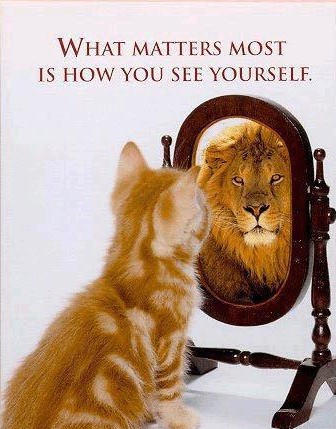
Now bring it a little closer. Let’s look at YOU.
- What have you done this year that you are particularly proud of? Take a moment and pat yourself on the back.
- When did you really show up?
- How did you help others?
- What recognition were you given – both small or large?
- What recognition did you give to others?
Reminding yourself of all the reasons to be grateful takes you out of the frenzy and back to the gratitude and celebration of Christmas and your life. Remember your body follows your brain. When you apply focus with feeling you change your state of being. Feel this shift in your body and what it makes you wish to do and how you wish to be. Honour this.
Hold this space as you contemplate how you wish to celebrate and enjoy Christmas. Not through obligation, that helps no one. Instead celebrate and share through honouring of yourself and those you love. Choice from this spacious place of love changes your life and those around you. Whenever you are in a difficult situation over the next week, feel this. Remind yourself that this is the truth of who you are.
Your Christmas Pledge
Take it a step further. Write out your Christmas Pledge – of how you wish to hold yourself and travel through this festive season. It only needs to be a sentence or two. This small idea is powerful. In fact why not write out one for how you want the next year to be too. This is your Personal Pledge for 2016..
Change can occur. Simply by turning your attention to gratitude, you feel the power of your love for yourself and for others. Let this shift be how you choose to effortlessly fly though Christmas and set sail for 2016.
Merry Christmas and thank you for being.
Find out more about Sonia on: Soniafriedrich.com
The post 2015 – That’s A Wrap! appeared first on .
]]>The post How to grow your business – events with Sonia Friedrich appeared first on .
]]>The post How to grow your business – events with Sonia Friedrich appeared first on .
]]>The post Disrupting inertia with a new buzz in business appeared first on .
]]>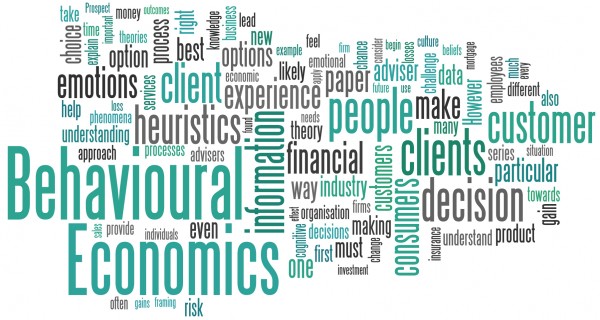
Mentor and Strategic Consultant and Verandah Magazine columnist Sonia Friedrich is giving a series of three events sharing insights on behavioural economics and business at Startinno in Byron Bay, starting on September 8.
For many in business and marketing the traditional methods of how to market and build a business have stood the test of time. To shake up old concepts that have built careers, industries and brands is no small feat. It also challenges our default position – our fear of loss. We are hardwired to stay with the status quo, unless there is a reason so significant it disrupts our inertia. It is easier to stick with what we know and apply our natural confirmation bias where our brain works to find those facts, case studies and successes that continue to support our position, and no doubt our career. It conveniently lets other information fall away.
As a new entrant, or in this case a new idea, arrives and shifts the goal posts forever, as in any market, not everyone survives. Tried and true is a common positioning we grip onto at this time. While some learn to play catch up, many fear the loss of what they know and can’t adjust or reinvent themselves quickly enough.
We fear loss more than we value gain by a ratio of about 2: 1. I felt this loss myself when the ideas and new concepts of behavioural economics and neuroscience shook up what for decades I knew, believed and spruiked to build business and brands. I had been successfully building markets and brands for more than 25 years and to have new ideas question my ability or suggest I was doing it wrong, was welcomed with a harsh dose of cynicism. But I had been asked to work in a team of very smart people, a small team of four, to build new models that would apply behaviour economics and neuroscience to market research and brands in Australia and the excitement of building something new disrupted my default.
It was so much fun! Taking the ideas of the Nobel prize winner Daniel Kahneman and the work he did for so many years with Amos Tversky, together with a cast of other inspiring thought leaders, we spent months sifting through their excellence. If these ideas worked in theory and in experiments, we imagined they must work in business and in real life too. In the process I was converted. I threw my old theory, methods and practices out into the wind, as I learned and then played, and created new models to apply to life.
We took them to the market to see how they would go. It turns out they work in the business world too. We won projects by working differently. Our focus was simple – apply the knowledge of behavioural economics and change behaviour. The results were far greater thananything I’d seen before.
Since then I have applied behavioural economic theory to business and brands, beyond market research. I have helped individuals apply them to their life and initiate much needed life change
I have seen:
Multi- million dollar media budgets cancelled on the spot
A 40% increase in revenue by creating a pricing decoy that cost nothing to implement
Life change in individuals as they finally break through their procrastination and have the tools to use for the rest of their life…and so much more.
The managers and marketers of brands, together with the support companies they engage – advertising agencies, market research, public relations, media buyers, education will need to apply behaviour economics if they want to survive. Why? Because if they aren’t using behaviour economics, their competitors are. New businesses are emerging that use behaviour economics and neuroscience to create and maintain an edge. Strategic planners are being replaced by ‘choice architects’ and personal development is being replaced by ‘reality architects’.
There is a new language in business, it’s called behaviour economics and it’s time to jump on board.
Mentor and Strategic Consultant Sonia Friedrich will give a series of three events sharing insights on behavioural economics and business:
Event 1: Where are you losing customers?
Event 2: What’s a brand anyway?
Event 3: Irrational Pricing Strategies Win!
Book early to avoid disappointment, as all three events are likely to sell out. To find out more or book your ticket visit: startinno.com/events/growing-your-business
Find out more about Sonia on: Soniafriedrich.com
Verandah Magazine is proud to be a sponsor of Sonia Friedich’s events.
The post Disrupting inertia with a new buzz in business appeared first on .
]]>The post So, what do you do? appeared first on .
]]>
Verandah Magazine’s resident strategic mentor and business coach points out the absurdity of judging someone by what they do, and suggests we should all stand up and be counted for everything we are…
“What do you do?” In my opinion these four words have a lot to answer for.
Suddenly, all sorts of associations and assumptions start firing in our memory, based on personal experience with others or on societal conditioning. Often what we attach to the answer has little to do with the actual person standing in front of us. The poor bystander is in our mental firing line and we can’t stop the attachments that are already causing certain automatic responses, and yet all this person has done is answer a simple question and state their profession.
Whatever our profession, when we ask somebody what they do, the majority of us all react in a similar manner – whether the answer is tradesman, lawyer, nurse, dentist, teacher or politician. We determine the standing of that person in society, their salary range, the type of house they might live in, the car they might drive, suburb they live in, what they eat, wear and how they may enjoy life. All this happens in a few seconds as we unconsciously, grab, dissect and process information. In just a few moments we have decided who this person standing in front of us is and yet we are all so much more that what we do.
So much of our identity comes through our profession – but why? Why need to place each other in boxes? Are we really trying to open a dialogue and find out more about the other person, or are we simply asking an habitual question that helps us determine the hierarchy of where we fit in, so that we can feel safe or know how to protect ourselves?
There is so much more to each of us than a job that used to define us. Next time you are asked: “What do you do?” why not share some other aspects of what you do and give a well-rounded and honest answer that encapsulates the fullness of who you are? Answer: I am a partner, lover, sister, dog walker, cat cuddler, cook, runner, swimmer, artist, author, amateur photographer, cyclist, gardener, cleaner, speaker…meditator, hostess, movie watcher, strategic consultant, , and I do many other things too. How about you?
Diffusing the power we place on profession is one way to redirect the conversation. Or you can simply bring the actual question “What do you do?” into relationship and ask: “Why would you like to know?”, and see what happens from here. The conversation may abruptly end, which means neither of you need to waste further time with pleasantries OR you might for the first time have a real conversation. Both are perfect.
Sonia Friedrich is a Mentor and Strategic Consultant to Multimillionaires and Business Owners. She’s launched a new DVD that you can download or stream or purchase as a hardcopy – How to Set Fees and Terms – for Consultants and Service Providers. If you would like to find out more visit www.soniafriedrich.com.
The post So, what do you do? appeared first on .
]]>The post Money, money, money. Must be funny. In a rich man’s world… appeared first on .
]]>There seems to be a weird relationship the majority of us have around money. So often we lose our power when the subject comes up. We find it a difficult to discuss, let alone ask for money for the services we offer. We whisper our fees and terms, start to sweat, or even discount the fee right on the spot. Many of us simply avoid the topic of money all together, and divert the conversation to something completely different. But of course none of this serves us at all. Money, or abundance, is such a central part of our life and actually helps life flow. We need to learn basic skills for these discussions and to love and embrace the topic rather than fear it.
When you run your own business, being able to talk about money, without fear, is a critical part of the daily conversations – and it needs to be. After all it creates the survival of your business, helps pay the bills and ideally, is what allows you to make a profit and live the life you dream. Understanding human behaviour toward money (including your own) can help you understand how customers behave around money too.
Did you know that you (and all humans) fear loss more than you value gain? You do this at a ratio of 2:1. This means that you prefer to stay in a situation that you are in, even if it isn’t good for you. What is the implication of this in business? It means even if you know a product or service is good for you, your default position is the status quo. This default position remains the same until you emotionally engage with the product or service and this tips you over to disrupt your status quo. Your customers are exactly the same. Customers will fear losing not only the position they are in, they will also fear losing the money they are about to part with for your product or service. Even when you know something is good for your customer this fear of loss is one of the reasons they simply cannot make the decision to purchase it and walk away.
You physically feel pain when you pay. Seriously! The insula (or insular cortex) in the brain fires when you are about to part with cash. This is one area of the brain associated with anxiety and pain. No wonder it hurts to pay. You literally have the pain of paying.
Have you ever seen Apple discount their products? No. Never. Why? They know that discounts permanently damage the perceived value of the brand. So when you’re thinking about having a discount to bring in some short-term revenue, be aware that the relative value now associated with your brand is reduced forever.
There are many factors involved in the interaction and association we have with money. Understanding some of these not only helps put customer decision-making and judgement in perspective. You can learn to use some of these aspects to the financial advantage of your business.
Instead of fearing money it is time to embrace it. Make money your friend. Love the numbers and start to see and feel a shift in your relationship and power with money.
Sonia Friedrich is a Mentor and Strategic Consultant to Multimillionaires and Business Owners. She’s launched a new DVD that you can download or stream or purchase as a hardcopy – How to Set Fees and Terms – for Consultants and Service Providers. If you would like to find out more visit www.soniafriedrich.com.
The post Money, money, money. Must be funny. In a rich man’s world… appeared first on .
]]>The post The right price in the right place at the right time appeared first on .
]]>“I’ve been involved in numerous successful technology start-ups,” says Dan Swan, who has a PhD in Innovation in the Creative Industries. “I’ve worked in the US, UK and in Australia, and my experience in innovation spans the full project lifecycle which is where I see how I can help people wanting to start a business.”
For Sonia Friedrich, the impetus to work with Swan came from her desire to help entrepreneurs and business owners understand the human behaviour that lies behind business decisions. “I really want people to gain this information before they talk to marketers, advertisers, PR companies and the media because it’s so vital for them know how to present and communicate their ideas to customers and to investors.”
Working specifically on how customers behave towards price, Friedrich, who has a Bachelor of Business in marketing, and has worked for numerous Fortune 500 companies, says that the secret is in understanding what she calls, “behaviour economics. There’s been a lot of research done into the brain and how we (and therefore customers) make judgments and decisions. We understand the biases that are used to support personal beliefs and choices – but what I’ve learned is that we can directly change behaviours.”
Swan, who began StartInno to encourage local businesses through their start-up phase, is a firm believer in the concepts of networking, and co-working. “Byron Bay is a melting pot for new business,” he says. “Outside of the main cities we have the highest density of creative industries anywhere in regional Australia – to me the idea of business start-ups being able to access a community that includes seasoned entrepreneurs as well as fledgling business ideas is a great way to share what’s worked – and why it’s worked. My journey began by just starting, and so what drives me is to help others ‘just start’ as well.”
One of the main topics for the night will be to help participants understand the emotional engagement customers have with price and how to use it to their advantage. Topics will include:
- The path of least effort
- The pain of paying
- Decoys
- The power of free
- Why discounts permanently damage
- and more
For Friedrich, teaching business owners how damaging it can be to discount their price is something about which she is passionate. “When I mentor business people on this it’s incredible to see the direct result that occurs from the shift in thinking that prices have to be discounted to never discounting – it’s a very powerful thing to learn,” she says. Until recently Friedrich was mentoring everywhere but Byron Bay, but – a bit like Swan – she too, as a resident of almost 12 years standing – has seen so many creative businesses start up here, that now she has applied her mentoring to herself. “I realised that I’d really rather not get on a plane to Sydney for work if I didn’t need to,” she says. “I’ve also found it’s very rewarding working with business owners in Byron Bay because small business owners are risk-takers. Unlike many multi-national companies where fear of change can set in, or people are worried about introducing something new because they fear they might lose their job, I find principals of smaller companies welcome the change – directors of small to medium size firms can see the advantage of these ideas and actually implement them in a few days or a week.”
To book tickets go to:
https://www.startinno.com/events/attracting-customers
For more information on Sonia Friedrich go to: www.soniafriedrich.com For more information on StartInno go to www.startinno.com
The post The right price in the right place at the right time appeared first on .
]]>
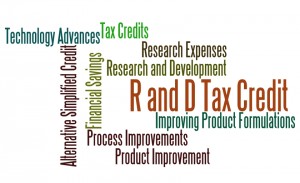

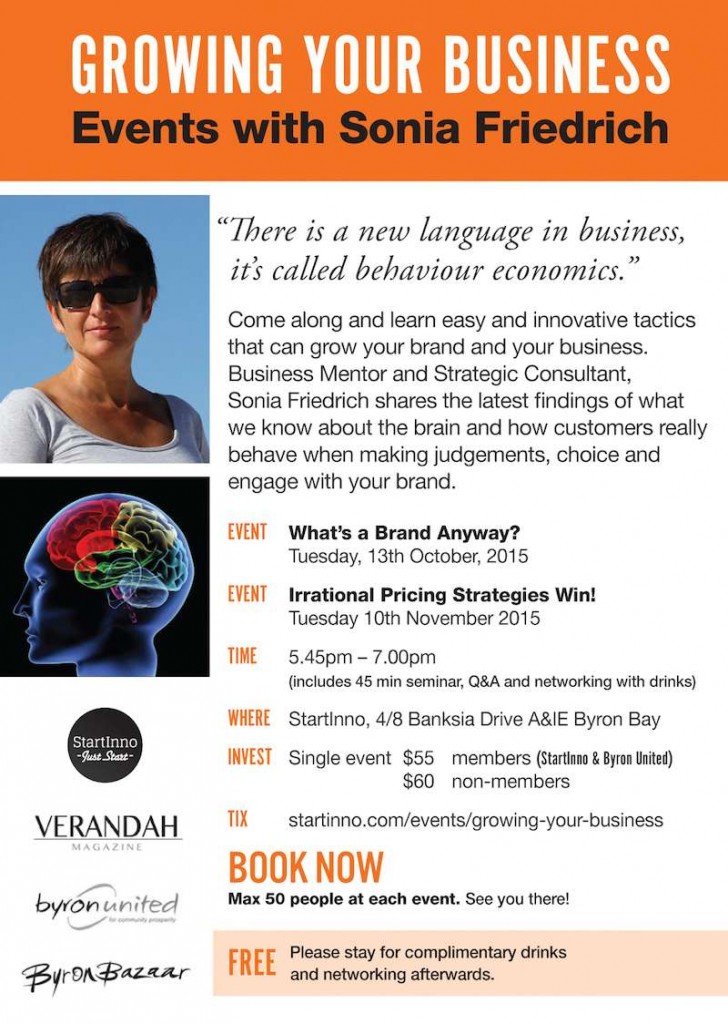
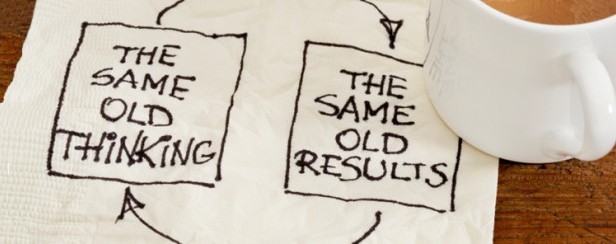
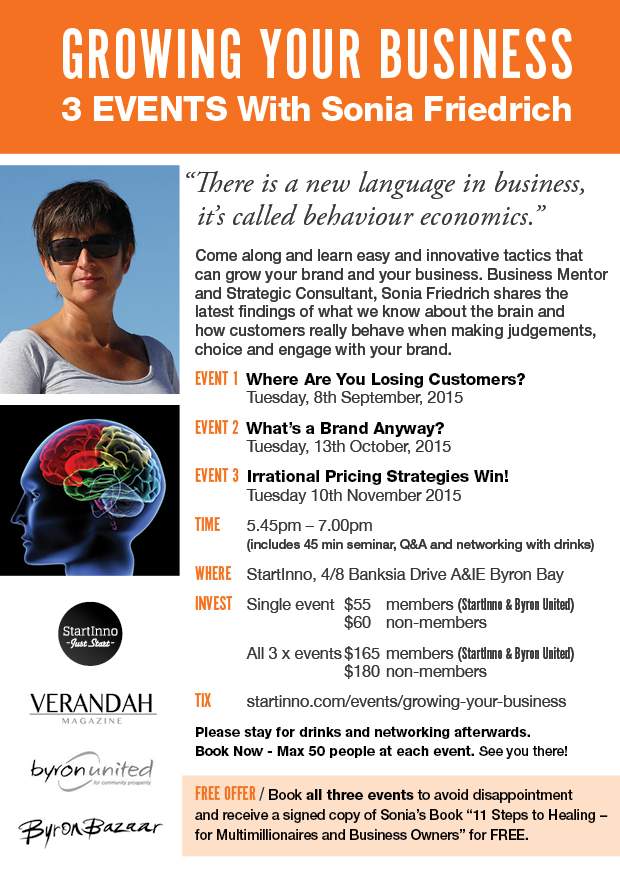

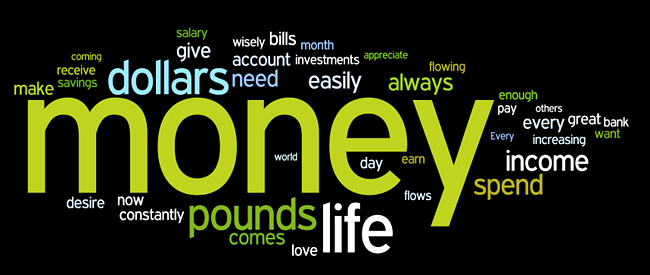


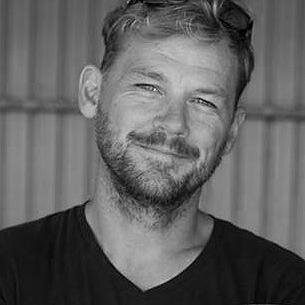
![Sonia-flyer[1]](https://www.verandahmagazine.com.au/wp-content/uploads/2015/05/Sonia-flyer1-1024x719.jpg)